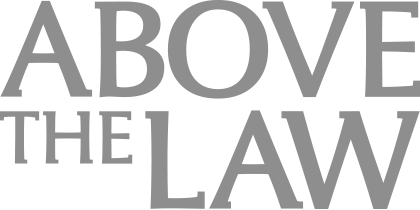The Chief Justice, a Dean, and a Newspaper All Walk Into a Censorship Scandal
No good deed goes unpunished, as the Chief Justice's visit to an out-of-the-way law school leaves controversy in his wake.
The title is phrased like a joke, because this whole story plays like a joke: full of misunderstandings and dumb decisions. Hm. Typing that out made me realize that also describes most of the weekends of my adult life if you just add the phrase, “I’ll have another Manhattan.”
We set the stage for this joke in my home town of Portland, Oregon, and the campus of the Northwestern School of Law at Lewis & Clark College. Last week, Chief Justice John Roberts visited the school to judge a moot court competition.
But the real controversy began after the Chief skipped town and the Dean started monkeying with the press coverage of the event — and blaming his actions on the Supreme Court…

Curbing Client And Talent Loss With Productivity Tech
The Chief Justice deserves praise for visiting a law school outside the T14, where visits from SCOTUS justices are routine. Add the fact that Lewis & Clark is a good 2800 miles from his chambers, and the Chief Justice’s trip becomes really extraordinary.
Joined by two Portland-based jurists, Judge Anna Brown and Judge Diarmuid O’Scannlain, the Chief Justice judged a moot court competition regarding a Clean Water Act case. In the hypo, a developer dredged a wetlands to build a fake island for a golf course and increased the flood risk for those living in the area. The Chief Justice sided with the developers. There’s a shock.
Anyway, after the competition ended, the school newspaper at Lewis & Clark, The Pioneer Log (it’s better than bad, it’s good!), wrote a glowing account of the visit from the nation’s top jurist. But the story didn’t run in the Friday edition of the paper.
Sponsored

Happy Lawyers, Better Results The Key To Thriving In Tough Times

Law Firm Business Development Is More Than Relationship Building

Curbing Client And Talent Loss With Productivity Tech

AI Presents Both Opportunities And Risks For Lawyers. Are You Prepared?
Enter Dean Robert Klonoff, who you might remember as providing Elie’s favorite response to the recent U.S. News rankings. This time, the Dean’s media savvy failed him; he intervened to halt the publication of the article, claiming that the Supreme Court press office had to sign off on the piece.
This development was news to the Supreme Court press office, which placed no such requirement upon the school. Micromanaging press coverage crosses the “Big Brother” line, and the Court did not appreciate being blamed for a breach of First Amendment rights. The Supreme Court press office limits its meddling to requiring final edits of promotional materials, thank you very much.
Unfortunately, since the press office had no intention of editing a news piece, when Dean Klonoff sent it in, no one bothered to get back to him immediately, believing the item was passed along as an FYI. And so The Pioneer Log got scooped on what was the biggest event in Lewis & Clark news since one of their alums got way too into cigars. Or maybe got cigars way too into them.
Admittedly, Dean Klonoff is not a constitutional lawyer, but this may be a case of simple contract law:
Adam Goldstein, attorney advocate for the Student Press Law Center in Arlington, Va., said private schools such as Lewis & Clark aren’t bound as tightly by the First Amendment as public schools when it comes to restricting student papers.
But Lewis & Clark’s longstanding promise to not review stories in advance works as a contract that should have prevented it from agreeing to any prior review, he said, even if school officials thought the Supreme Court office required it.
“This obviously isn’t the most sinister censorship that I’ve ever seen, and I understand the desire of the law school to appease the chief justice because it’s a big feather in their cap,” Goldstein said. “But the law does not recognize a metaphysical state of, ‘it (the press) is usually free, most of the time.'”
Sponsored

AI Presents Both Opportunities And Risks For Lawyers. Are You Prepared?

How The New Lexis+ AI App Empowers Lawyers On The Go
This isn’t the first brush up between the Supreme Court and the media. For example, back in 2004 Justice Scalia wrote a formal apology after a U.S. Marshal seized tape recorders from journalists covering one of his speeches.
So everyone blamed everyone, hijinks ensued, and in the end, everyone learned a valuable lesson about freedom of the press and the First Amendment. It was like a very special episode of Blossom.
Chief Justice John Roberts’ Visit to Lewis & Clark College Sparks a Press Freedom Controversy
[The Oregonian]
Chief Justice Roberts Presides Over Inaugural Moot Court Competition [The Pioneer Log]
Understanding Justice Scalia [Reporters Committee for Freedom of the Press]
Earlier: Responding to the New U.S. News Rankings: The Parade of Butthurt Deans Begins Now







